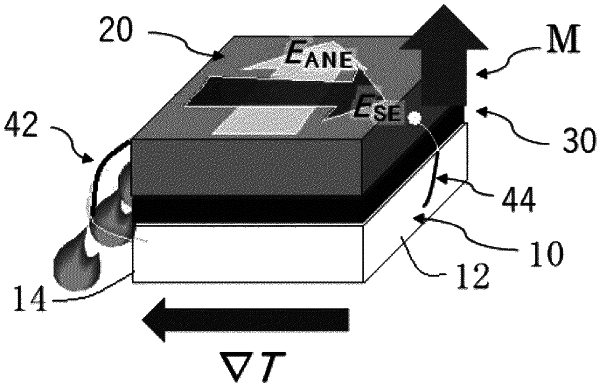| CPC H10N 10/17 (2023.02) [H10N 52/80 (2023.02)] | 7 Claims |

|
1. A vertical thermoelectric conversion element comprising:
a thermoelectric layer made of a thermoelectric material exhibiting a Seebeck effect, wherein one end portion of the thermoelectric layer is on a low temperature side, and the other end portion opposed to the low-temperature-side end portion is on a high temperature side;
a magnetic body layer stacked on the thermoelectric layer, wherein the magnetic body layer has a magnetization component in a film thickness direction of the magnetic body layer, has conductivity, and generates a potential in a vector product direction of a temperature gradient direction and a magnetization direction of the magnetic body layer;
a low-temperature-side conductor part connecting a low-temperature-side end portion of the thermoelectric layer and a low-temperature-side end portion of the magnetic body layer,
a high-temperature-side conductor part connecting a high-temperature-side end portion of the thermoelectric layer and a high-temperature-side end portion of the magnetic body layer; and
output terminals provided at both end portions of the magnetic body layer in the vector product direction, which are in the vector product direction of the temperature gradient direction of the thermoelectric layer and the magnetization direction of the magnetic body layer, for extracting a potential generated in the vector product direction.
|